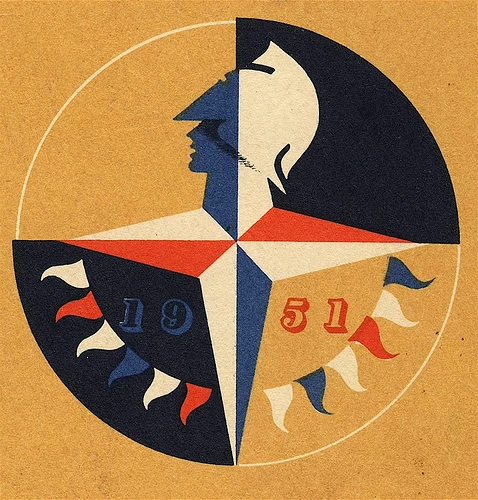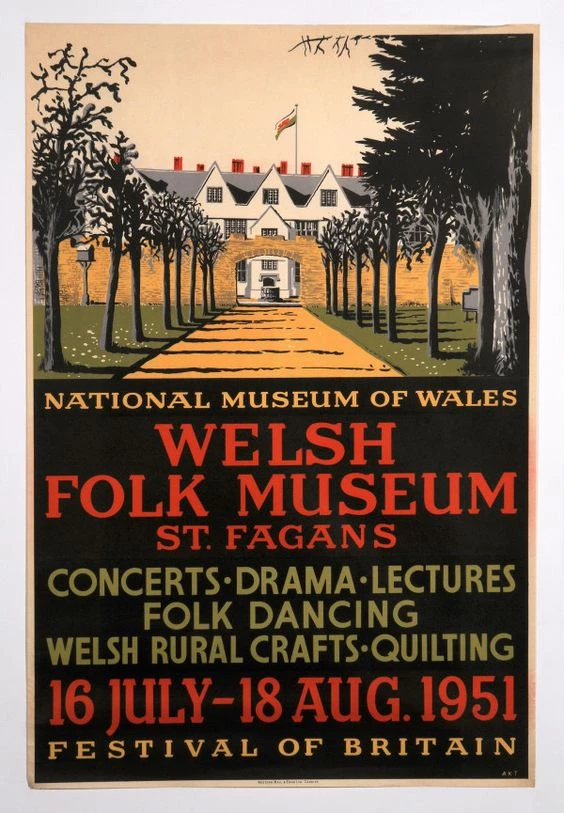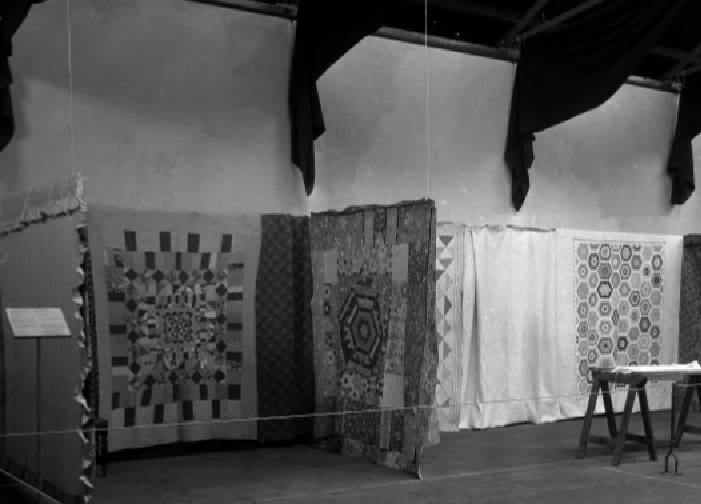'A Tonic to the Nation’: St Fagans and the Festival of Britain 1951
, 15 Awst 2016
Exactly 65 years ago, during the summer months of 1951, there would have been much excitement in the air at St Fagans.
It was the year of the Festival of Britain, and the Welsh Folk Museum as it was known then, had a significant role to play in the festivities.
The Festival of Britain was a national exhibition held throughout the United Kingdom in the summer of 1951, organised to mark the centenary of the Great Exhibition 1851. Its purpose was to display the British contribution to civilisation - past, present, future, in all the arts, science and industrial design. Nearly all the leading British designers and architects of the time were involved in the festival.
But the Festival of Britain was also considered as a moment of light relief for a nation recovering from war. The official festival booklet described the festivities as 'A Tonic to the Nation’.
The Festival of Britain’s committee invited the Welsh Folk Museum to organise a programme of events and exhibitions at St. Fagans as part of the festival, to showcase the best of Wales.
The special programme ran throughout the months of July and August in 1951, and consisted of three concerts, a series of four lectures, two performances of the play Blodeuwedd, written by Saunders Lewis, seven exhibitions of folk dancing, together with two national exhibitions of Welsh rural crafts and Welsh quilting.
At the same time the Committee provided the money necessary to re-erect the Stryd Lydan barn and the Esgair Moel woollen factory as permanent memorials of the Festival. Shortly afterwards the Committee took the decision to provide additional money for the re-erection of a third building, the Gower farmhouse, Kennixton. The total contribution for the three buildings was £6,150.
Craft was a vital element of the festivities at St Fagans. The museum employed extra staff and craftsmen during these months to provide daily live craft exhibits and demonstrations, including a wood turner from Abercych, Pembrokeshire, along with his apprentice and a basket-maker, from Caeo, Carmarthenshire.
A small ‘Welsh Rural Crafts’ exhibition went on display, including examples of pottery, iron work, textiles, leather work and furniture. However, the most important and prominent event of the entire festival at St Fagans was the Welsh Quilting exhibition, where competitions and demonstrations formed the major part of the activity.
The Western Mail reported in Feburary 1951 that;
This exhibition will undoubtedly be the largest most comprehensive and the most interesting of its kind ever staged in the Principality. Substantial prizes and certificates of merit will be awarded to successful candidates and it will undoubtedly provide an excellent opportunity for Welsh quilters to show our overseas visitors that they still possess the skill of their forebears in this one remaining traditional needlecraft.
65 years later, there is excitement and anticipation in the air again at St Fagans, as we look forward to a new and transformed museum - once more, showcasing Wales as a nation with its own identity on the world stage #MakingHistory





sylw - (6)
Hi there Eileen,
Thanks for the update - I will let our curator and archivist know. They are currently at the national Eisteddfod and so will be returning to the office in the coming week or so.
Best wishes,
Sara
No problem at all Eileen - thank you for getting in touch!
I've been talking to a curator and the archivist at St Fagans and they are looking into it - I will drop you an email when we post a response here.
Best
Sara
Digital Team
Hi there Eileen
Thank you for your comment and for sharing your memories of St Fagans with us. I will contact our archivist, who might have advice on how to track down these photos, and let you know what they say.
Best wishes,
Sara
Digital Team